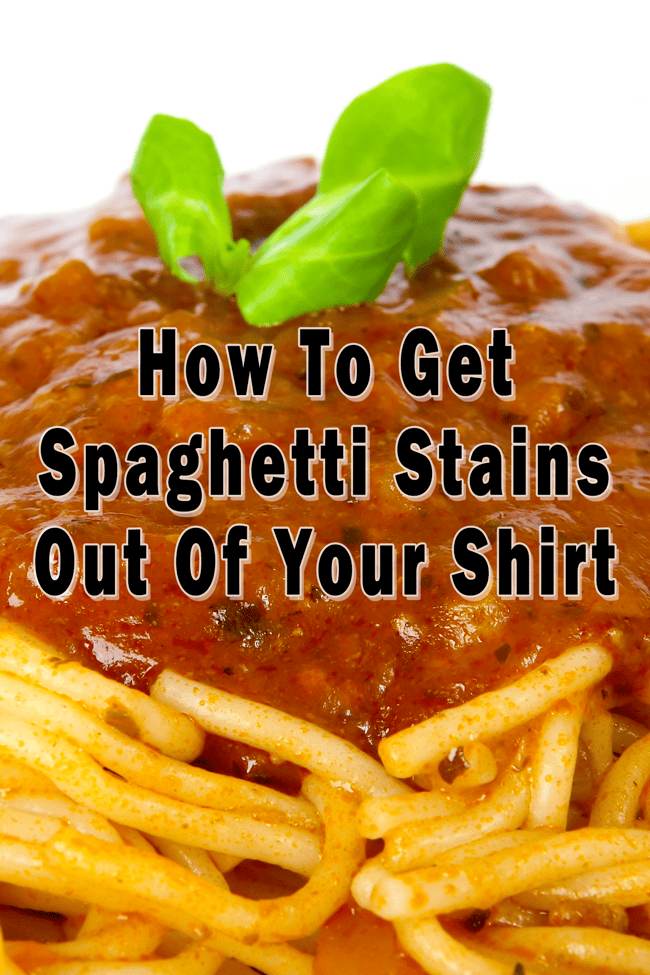Spaghetti sauce has a lot of staining power thanks to the ingredients. Acid from the tomatoes, fat from the oil and meat used to make the sauce, and starch from the pasta all combine to make a stain that wants to stick. To get it out, act fast.
Act Fast with Water
Scrape away any excess to lessen the risk of making a bigger stain. Take off the shirt and turn it inside out. If you rub it from the front, you just grind the sauce into the fibers of the fabric. From the back, flush the stain with cold water. Don't scrub the fabric, just rinse it with the strongest stream of water you can find to force the sauce out of the fibers of the shirt.
Use Detergent and a Little Pressure
Work a bit of laundry soap or a degreasing dish soap into the back of the wet stain. Still from the back, tamp the stain by gently tapping it with an soft-bristle toothbrush. Don't scrub, and don't tap hard enough to flex the bristles. You're just working the detergent through the fabric without damaging the fibers. Rinse well after tamping.

Pre-Treat Before Laundering
Once you've tamped and rinsed, turn the shirt right side out and lay it flat. Spray the stain with a pre-treatment product that's designed to loosen up tough stains. A simple homemade spray that you can mix to use any time is
- 1/3 cup liquid dish soap
- 1/3 cup plain ammonia
- 1/3 cup water
As this product contains ammonia, once you pretreat the stain, you cannot bleach this shirt until it's been washed at least once. However, if you're on the road or it will be a while before the shirt is laundered, it is nice to know that this treatment can be applied to the stain and immediately washed, or rolled up and washed later. If you decide to mix up a bottle of this for future use, mark it as a product containing ammonia.
A Word About Vinegar
Vinegar is a terrific degreaser and can be used on cottons to good effect. However, vinegar can permanently discolor some fabrics, so before you use it to get the tomato sauce out of any garment, test is on the home for color-fastness. It's important to note that vinegar can be used as a dye fixative. For example, if you want to dye eggs and don't have a commercial dye kit, you can mix food coloring, hot water and vinegar to good effect. That being said, if the fabric, staining food and vinegar react improperly, you might make the stain permanent. A good spaghetti sauce is completely worth the risk, but shirts aren't cheap and you want to take good care of your clothes. Act fast, flush the stain from the back with lots of cool water, then tamp with a degreasing detergent and pre-treat as necessary.
Hey James Hills wants you to share this!

